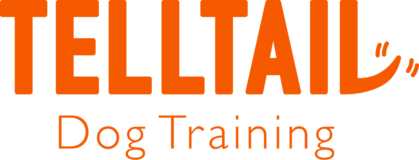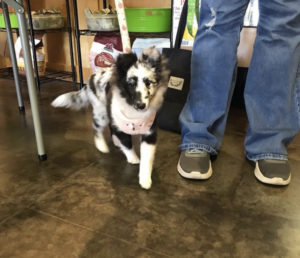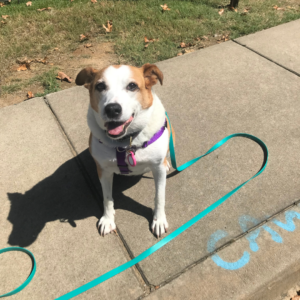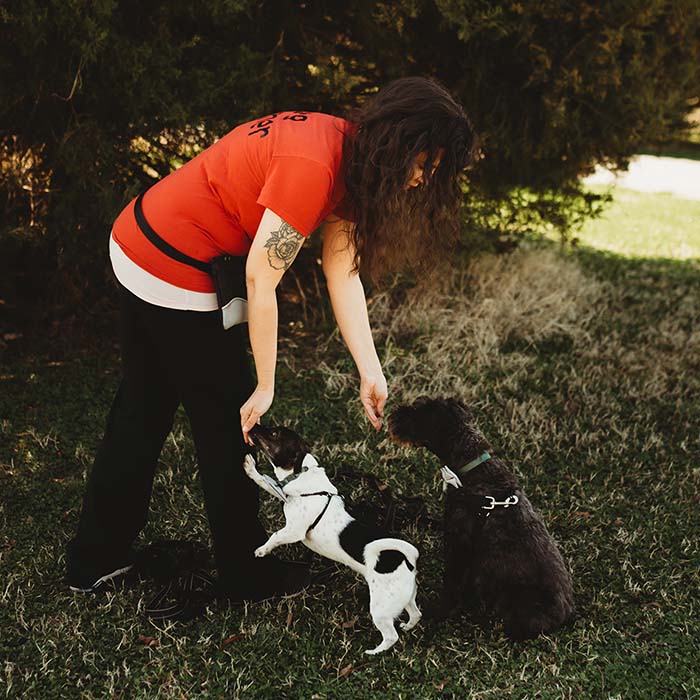Client Spotlight: Moose
Moose, then named Rocky, joined Meaghan Karney and Chris Levie on January 27, 2020, as a foster pup. “A few weeks later, we lost our 11-month-old ‘foster failure’ to a rare bacterial infection and Moose got us through some of the hardest days we’ve ever experienced,” Meaghan shared. “It was then that we knew he was our forever boy.”
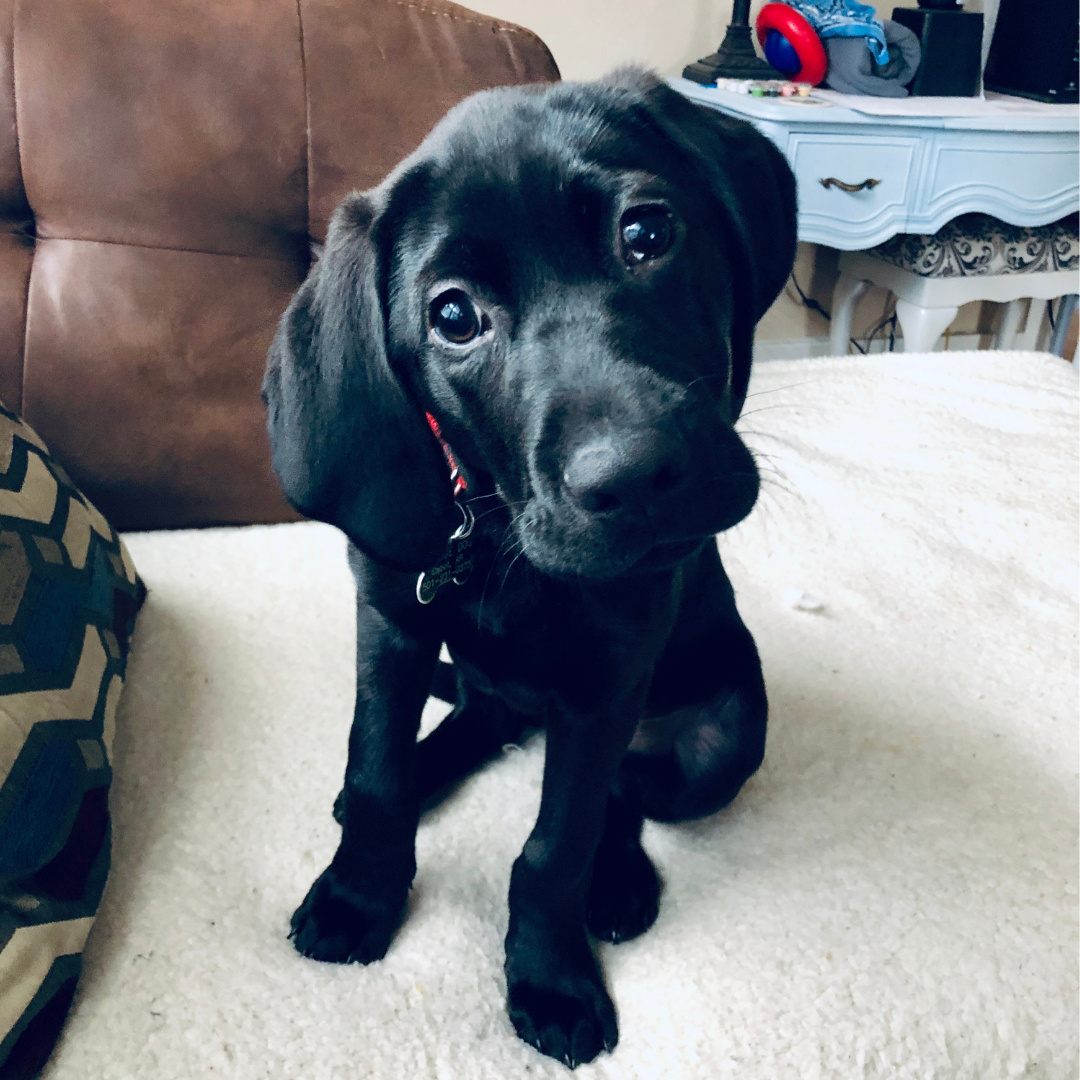
But there were some challenges. “As Moose grew older, we knew there was something extra special about him,” Meaghan explained. “He had a bark that sounded like nothing we had ever heard and was the most hyperactive puppy we had ever met. Covid-19 hit and it forced a major halt on our attempts to socialize Moose. When we were finally able to try socializing him again, we felt like we had no control over him and it was an overwhelming and unenjoyable experience for everyone involved, including Moose. It got so bad that I was on the verge of reaching out to my rescue leader to see what our options were as far as possibly rehoming Moose. I knew we loved him so much but I felt that we were not able to give him the home that he needed and deserved. I’m so glad I reached out to my vet before my rescue leader because she led us to Elizabeth and our lives were forever changed.”
Moose looks like a black Labrador. He’s got the ears, that cute little face, the body shape. But his bark and the intensity of his personality didn’t match. There was also his deep barrel chest that didn’t quite fit. And for over a year, I was confused, until his person, Meaghan Karney, shared that she’d gotten a DNA test done.

He was half Redbone Coonhound, half Labrador. Externally, he was mostly Labrador. Internally, he was all Coonhound. I reached out to a trainer friend, Alicia Harantschuk, who’d been on my podcast for the Pandemic Pup series, for some help.
She explained, “In general, coonhounds are sensitive, shy, emotional, energetic, smart, and loving creatures. We are seeing hounds more and more due to the assistance of rescue groups. Many earn a living from their hunting dogs and if they don’t hunt, well they can’t afford to keep them around. So those shy, fearful, less socialized dogs make their way into suburban life and adjustment is ‘ruff’ for everyone.”
Helping hounds transition into family life is very individualized, but she recommended a few things she’s worked on with her hound, Liberty Belle:
- Trick training for confidence and focus on handler
- Obedience training
- Calm exercises
- Working alone
- Outings – new places with new sniffs are a fantastic burn
- Cooperative Care (ears and nails especially)
- No feeding from a bowl
- Physical energy burn
Burn: A way to reduce energy and manage behavior, like sniffing (decompression walks), training (especially trick training or something else the dog enjoys doing), and enrichment activities
Then of course there are the challenges that come with a hound, including barking at other dogs and people. Alicia doesn’t recommend that hounds meet on leash until they can pass other dogs without barking. She focuses on calm behaviors in the house and no access to windows, which she calls “dog TV”. She also recommends planned social walks with known dogs. And of course, lots of disengagement and leave its for dogs, chickens, cats, and deer.
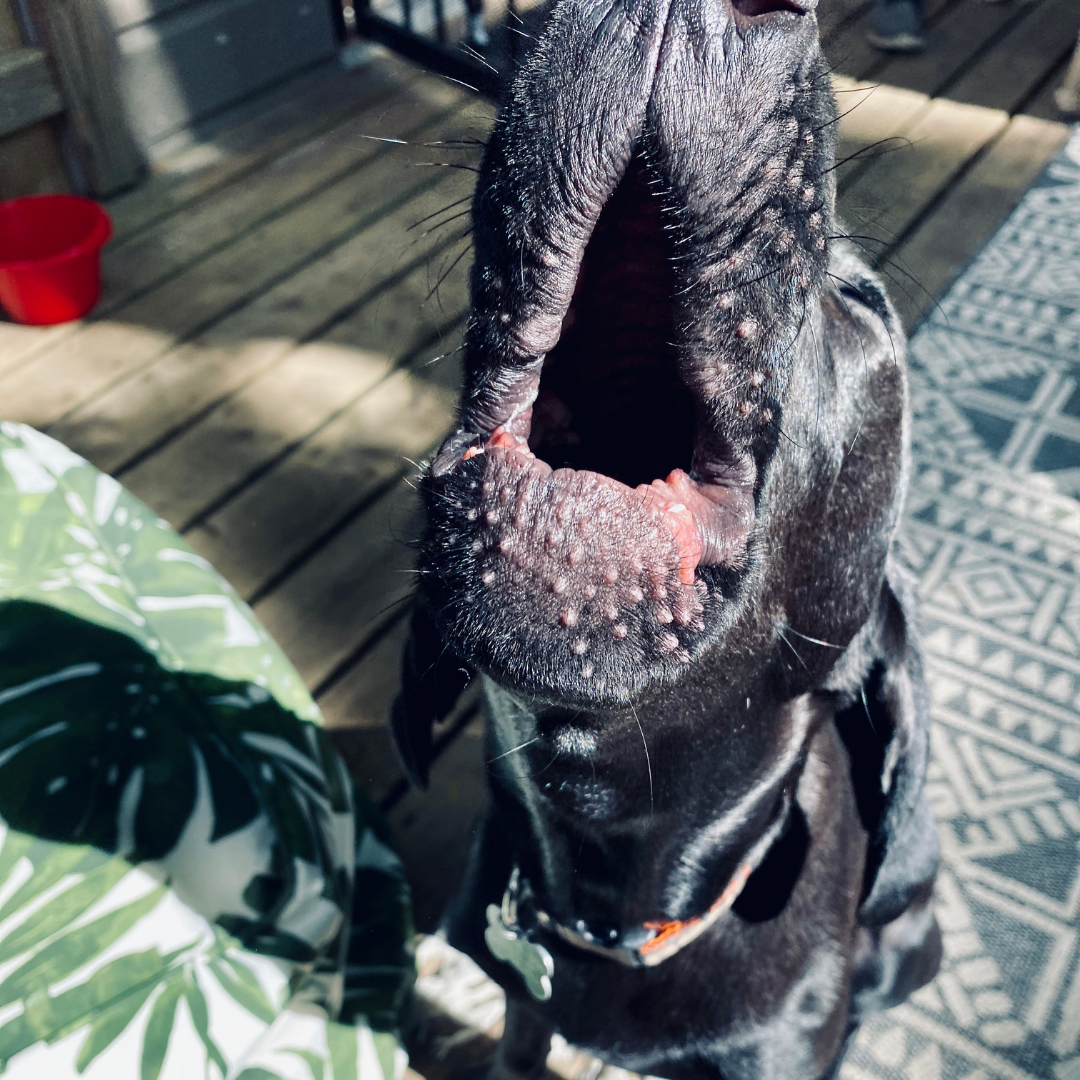
Meaghan and Chris have been able to incorporate a bunch of this guidance into their daily lives with Moose. Classes also helped, as did understanding that every dog is on their own journey. “I think the biggest realization I’ve had after going through some classes is that not every dog learns the same way,” Meaghan shared. “In class, I observed some dogs learning tricks and commands with very little effort from their people and minimal distractions. While Moose is very smart and catches on very quickly, he is also reactive and he learns and behaves best when he is not in the presence of other dogs. This doesn’t mean that Moose is aggressive or will never be able to be around other dogs; it just means that Moose has a different approach to training and I’m so thankful that Elizabeth has shown us some techniques that work for our special boy.”
Meaghan added, “I remember telling Elizabeth after Moose completed his first round of classes that I felt like we were finally able to communicate with Moose. Elizabeth gave us the skills to be able to tell Moose exactly what we expect of him and he started to respond really well to us. Before classes, I felt like we were on a completely different page as Moose and that’s where a lot of our problems arose. Now that we can communicate with Moose in a way that he understands, there is far less disappointment on both sides and our bond with Moose has increased tenfold.”
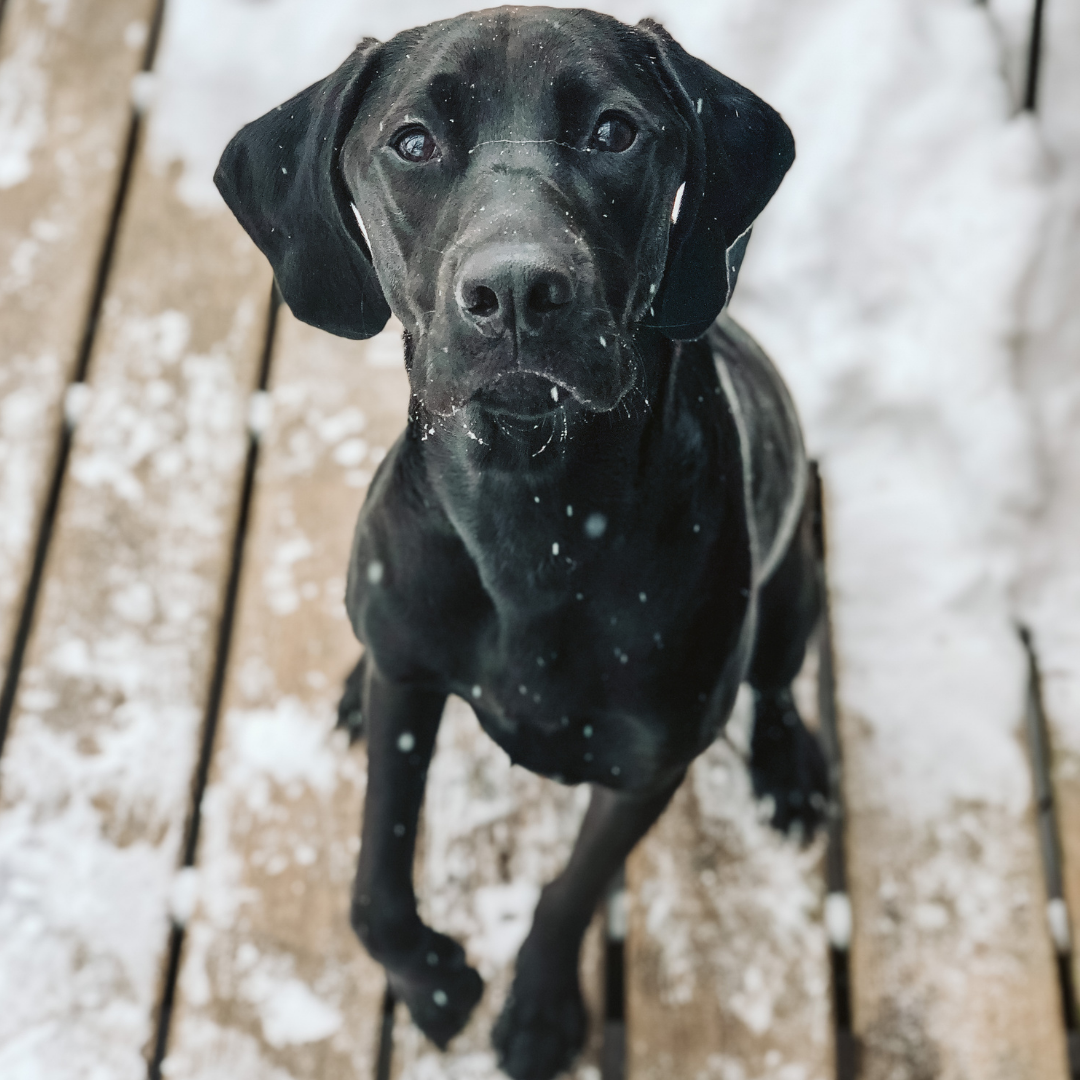
Meaghan and Chris hope to incorporate more nose work into his training and work on his leash manners. “I don’t think we will ever get to a point where Moose doesn’t get a little anxious when seeing new dogs, but our hope is to get him to a point where he can turn his attention to us in the presence of another dog, even for just a bit,” she shared. “I’m afraid to know where our family might be without the help of Telltail Dog Training. We started with a super anxious and hyper dog that we felt very little connection to and had no idea how to communicate with. After some classes and a few private sessions, Elizabeth gave us the tools and techniques we needed to learn how to effectively communicate and train Moose. We would be so lost without her guidance over the last couple of years and I owe our super special bond with Moose to Elizabeth and all of her help.”
